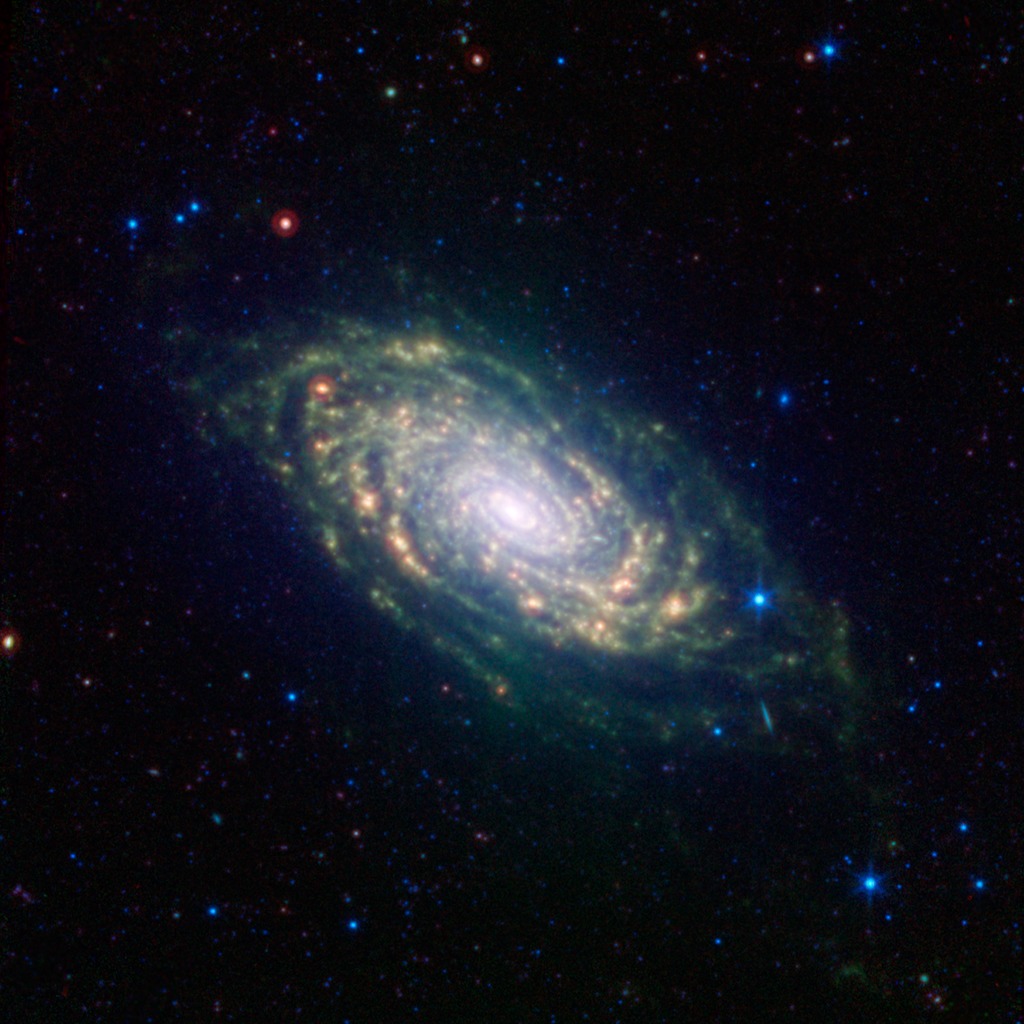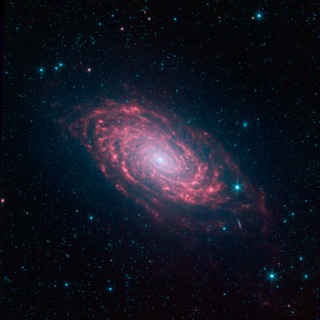
Credit: NASA/JPL-Caltech/SINGS Team
Observation • March 3rd, 2011 • sig11-001
sig11-001
The various spiral arm segments of the Sunflower galaxy, also known as Messier 63, show up vividly in this image taken in infrared light by NASA's Spitzer Space Telescope. Infrared light is sensitive to the dust lanes in spiral galaxies, which appear dark in visible-light images. Spitzer's view reveals complex structures that trace the galaxy's spiral arm pattern.
Messier 63 is 37 million light years away -- not far from the well-known Whirlpool galaxy and the associated Messier 51 group of galaxies.
The dust, glowing red in this image, can be traced all the way down into the galaxy's nucleus, forming a ring around the densest region of stars at its center. The dusty patches are where new stars are being born.
The short diagonal line seen on the lower right side of the galaxy's disk is actually a much more distant galaxy, oriented with its edge facing toward us.
Blue shows infrared light with wavelengths of 3.6 and 4.5 microns, green represents 8.0-micron light and red, 24-micron light.
About the Object
- Name
- Sunflower Galaxy • Messier 63 • M63 • NGC 5055
- Type
- Galaxy > Type > Spiral
- Distance
- 37,000,000 Light Years
- Redshift
- 0.0016
Color Mapping
| Band | Wavelength | Telescope |
| Infrared | 3.6 µm | Spitzer IRAC |
| Infrared | 4.5 µm | Spitzer IRAC |
| Infrared | 5.8 µm | Spitzer IRAC |
| Infrared | 8.0 µm | Spitzer IRAC |
| Infrared | 24.0 µm | Spitzer MIPS |
Astrometrics
- Position (J2000)
- RA =13h 15m 49.3s
- Dec = 42° 1' 45.5"
- Field of View
- 15.0 x 15.0 arcminutes
- Orientation
- North is 42.1° right of vertical





